Every good CEO knows that what we are learning now is the foundation for new ways to EARN in the future. The key is to make sure we don’t waste the learning and the lessons thinking this is just a freak interruption to a template we wish to get back to.
From the Field: What is a Credit Union?
“A Credit Union is a place to do your banking – we do loans, have checking and savings accounts, credit cards, mortgages, and other banking items. We are a not-for-profit cooperative financial institution, and operate like a bank except we don’t issue stock on Wall St. Since we don’t have to pay stockholders, we can use our income to provide lower loan rates, higher deposit rates, and do other things like reinvest in our community, give to charities, and keep our fees low for services. At NET Credit Union, we don’t have customers, we have members. Members have voting rights as to how the credit union operates. Our board of directors are volunteers – they don’t’ get paid to sit on the board. When you bank with NET, your money stays right here, local. There’s so much more you get when you bank on NET.”
A Sunday Meditation for Our Time
With thanks to Mark Willey, organist choirmaster at Georgetown Presbyterian Church, Washington D.C.:
Martin Rinckart walked quickly down the filthy side street that led to his house, distracted only briefly by a hungry mob fighting over the body of a scrawny and very dead cat. He knew them all, had ministered to them, buried their children, and fed them what he could spare from his own meager rations.
Today though, he carried nothing but an idea, a poem that had come to him while he was conducting one of ten funerals he had conducted that day.a He needed to write it down before it was forgotten.
Opening his front door, he rushed to his small desk and picked up a goose quill pen. Dipping it into the well, his mind wandering over the events of the past year, as the tip slowly filled with iron gall ink.
He could see their faces and hear their cries of anguish. The weeping parents burying their only child, the grieving young widow, sick herself with only days to live. They were almost too numerous to count, but as the town’s only living minister and one of just three surviving members of the town council, it was his job to count. In that year alone, he’d buried over four thousand souls, their lives cut down by the Black Plague, but this was just the latest pestilence.
Ever since his appointment in 1617 as Archdeacon of Eilenburg in Saxony, he’d never known peace, or plenty. The skirmishes between the various Protestant and Catholic states had metastasized into an all-out war in 1618; a war that killed millions. Poverty, sickness, hunger, and death were ever present for Martin, and his life was devoted in service to those who suffered.
Lifting the pen from the well, he set its tip on the paper. The familiar scratching sound of its strokes quickened as the letters formed words, flowing into lines of poetry:
Nun danket alle Gott Now thank we all our God,
mit Herzen, Mund und Händen, with heart and hands and voices,
der große Dinge tut Who wondrous things has done,
an uns und allen Enden, in Whom this world rejoices;
der uns von Mutterleib Who from our mothers’ arms
und Kindesbeinen an has blessed us on our way
unzählig viel zu gut With countless gifts of love,
bis hierher hat getan. and still is ours today.
https://www.youtube.com/watch?v=skdWLWF6Ttw
It’s hard to imagine this hymn emerging from such a dark time: a plague, and famine in the middle of a thirty-year long war. Somehow, between all the burials, feeding the hungry, caring for the sick, and ministering to as many people as he could, Martin Rinckart found time, and a spirit of thankfulness to write these words.
Writing them didn’t put an end to the plague, or bring peace to Europe, but Martin seems to have discovered what a spate of recent studies are confirming: Gratitude is good for our minds and bodies.
Could we, would we write words like these today? The words of this hymn of thankfulness flow from Martin’s time to ours, to inspire us to live with a spirit of gratitude in the face of sickness, even the threat of death, and how to focus our energy on service, rather than fear. The world needs more Martins. I want to be one. Don’t you?
In Case You Missed Spring: Nature Did Not
With all the world’s attention focused elsewhere, it is easy to overlook the calming rhythm of nature. A poem by Wendell Berry, “The Peace of Wild Things”, captures the life affirming repose of nature. Berry (born August 5, 1934) is an American novelist, poet, essayist, environmental activist, cultural critic, and organic farmer living in Kentucky.
When despair for the world grows in me
and I wake in the night at the least sound
in fear of what my life and my children’s lives may be,
I go and lie down where the wood drake
rests in his beauty on the water, and the great heron feeds.
I come into the peace of wild things
who do not tax their lives with forethought
of grief. I come into the presence of still water.
And I feel above me the day-blind stars
waiting with their light. For a time
I rest in the grace of the world, and am free.
Some of the life affirming beauty from our garden energized by a warmer than normal season.
Primrose:

Crocus:

Hyacinth cluster:

Should Credit Union Members Have “Jury Duty”?
A friend recently commented on his initial wait for possible jury duty:
As I write this, I am sitting at the D.C. Courthouse waiting to find out if I’ll be selected for jury duty. Many of you have been where I am, and likewise many of you remember the video that is played to prepare potential jurists for voir dire and a case: Jury Duty: Call to Serve!
It’s dramatic (over-dramatic?), and a bit of a strange juxtaposition. While we’re being told that the fate of democracy rests in our hands (!)—I’m really just sitting in a large room with people scattered around doing their work or reading, but mostly just waiting around. And it’s easy to dismiss the video—getting called up for jury duty feels like a distraction and not all that important, if waiting around seems to be our main job. . .
So, for the next few hours at least, I will try to bring a different perspective to jury duty. I will attempt to wait patiently and attentively, hoping for my time to serve, all while knowing that the work is critical, and much bigger than one person. Perhaps as I wait, I’ll learn something about duty as well.
The Duty of a Credit Union Member
Is there an analogy for the member-owner of a credit union? Could it be to “serve” by attending and voting for their leaders at the Annual Meeting? If we only ask and expect our members to use products, have we really helped members understand the cooperative principle that the “fate of democracy rests in our hands”? Is your Notice of the Members’ Annual Meeting a call to duty?
People Helping People: The Closing of the Restaurant Industry
One of the most threatened industries from the stay-in-place requirements will be the restaurant business. Every eatery, from the oldest locally-owned café to the largest national franchises, is financially at risk. These local businesses’ futures are in doubt; more importantly millions of full and part time workers may be laid off-indefinitely.
Almost ten years ago, Chef Jose Andres and his wife Patricia started the World Central Kitchen. They envisioned a non-profit organization that would create innovative approaches to combating hunger and poverty. Initially this was through providing clean cook stoves and culinary training programs along with social enterprise ventures that empowered local communities and economies. The focus was on country’s suffering from natural disasters or chronic hunger in the population.
Now this decade long world-wide charitable effort is focusing on the US: “We have shown that there is no place too far or disaster too great for our chefs to be there with a hot plate of food when it’s needed most.”
A week ago Chef Andres announced the closing of all his DC area restaurants. He explains why in this 4 minute video. He is paying all his staff for the next two weeks and converting several restaurants to Community Kitchens. Below is the conversion of his Bethesda restaurant’s location. While undoubtedly concerned about the future of his own enterprise, Chef Andres is putting community outreach as his first priority.
- Chef Andres’ Bethesda location
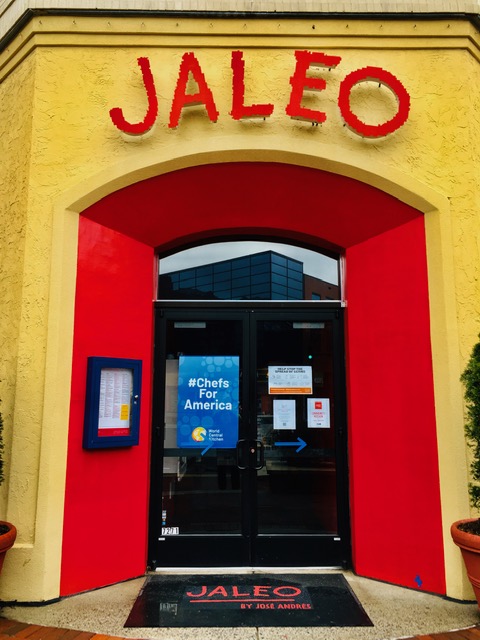
- The conversion to a Community Kitchen
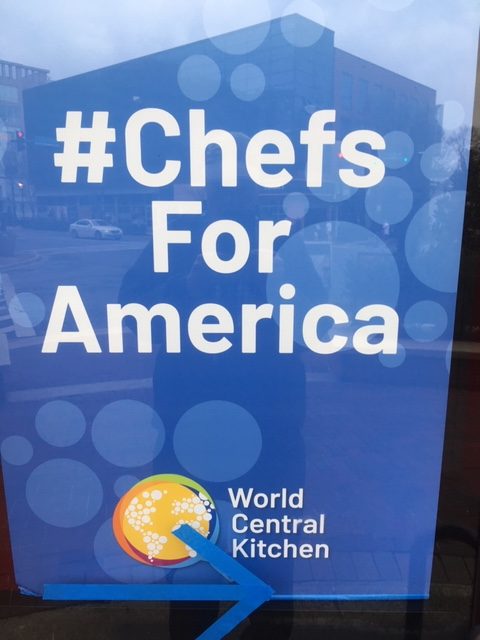
- Get in Line
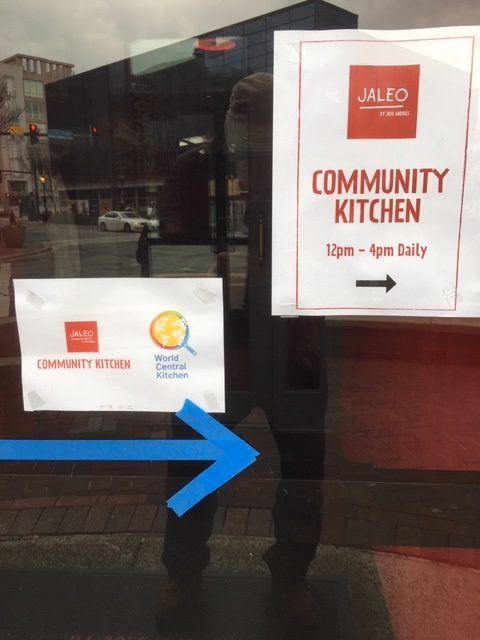
- Stand here signs in walk to pick up food:
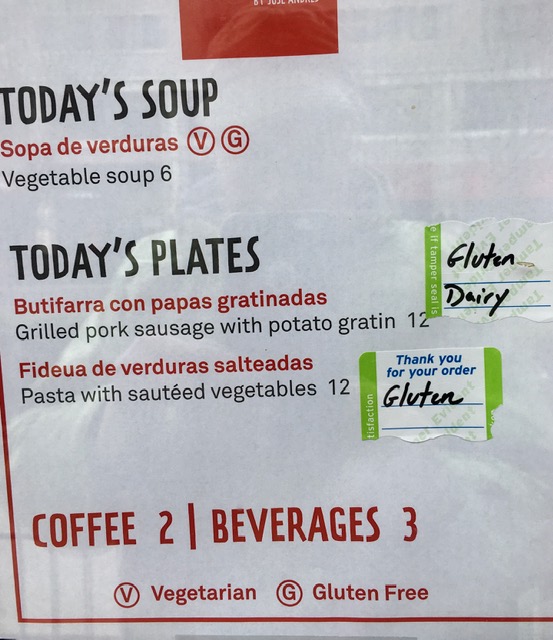
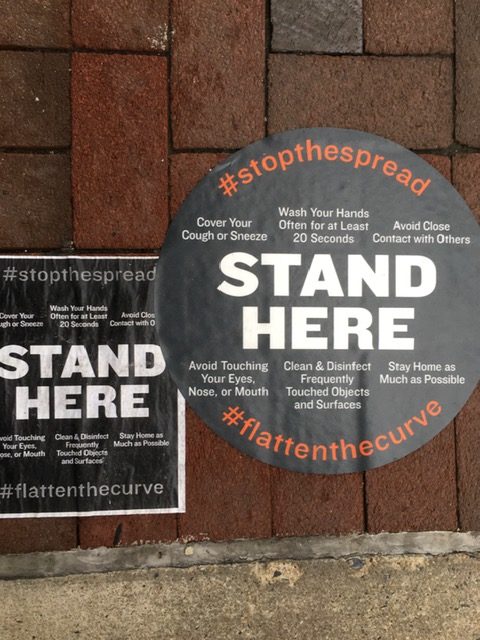
- Serving those most in need

So You Want Government Crisis Money
The subject line of a CEO’s email to staff: “Ensuring that our business records reflect due diligence, policy follow up, and the right balance of CYA”. Excerpts follow:
Team, think backwards – after this is all over, we may be AUDITED to see how we did during the crisis by official third parties. Not just our internal operations but those organizations we rely on to serve members. I want the board record and business documentation to show our attention to our processes related to these times and normal times. Assume a future proctology exam is coming and be ready.
For example: We are assuming the process to get GOV’T funds for extended PTO and employee benefits will be a FIGHT or a HASSLE at the very least. We are starting a process to make sure we keep the records to make our case very specifically as we learn the rules. Our management team must keep a CENSUS – have the numbers, know where people were, what they were doing , what work we accomplished in strained times, etc.
We want to never lose on process – so we have to anticipate process reviews and be ready. Make our business records tight and shining – especially through the upcoming months.
US Economic Growth by 50 Largest Metropolitan Statistical Areas
Economic conditions across the US are very uneven. The Bureau of Economic Analysis of the Commerce department has released the growth rate of the country’s top 50 metropolitan statistical areas (MSA) through September 2019.
At the high end are Las Vegas-Henderson at 8.6% and San Jose-Sunnyvale at 7.44%. At the other end of the range are Allentown-Bethlehem at -1.2% and New Orleans-Metairie at -2.52%
Knowing your area’s economic circumstances should help you understand members’ expectations about their economic outlook.
The Question Warren Buffet Would Ask a Presidential Candidate
“In the beginning. . .“
From the St. Anne’s Credit Union website:
Founded in 1936 and headquartered in Fall River, MA, St. Anne’s Credit Union has been providing financial products and services to SouthCoast communities for over 80 years.
St. Anne’s Credit Union was established in the midst of a depression, by a young man named William J. Cyr who saw the possibilities – people helping each other regain their financial health. With the assistance of a group of friends, Cyr began collecting 25 cents from several people after church each Sunday to accumulate enough funds to qualify for a federal charter. With assets totaling $1016, St. Anne’s became a fully sanctioned federal credit union in 1936. Realizing the positive impact this had on the community, Cyr went on to found 36 more credit unions throughout New England. [emphasis added]
The further you look back, the longer you can look ahead.
